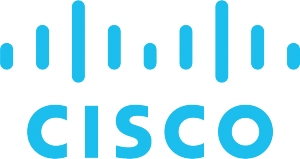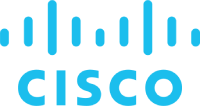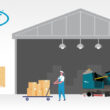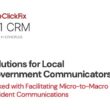A New Operating Model for State and Local Government
A new operating model for state and local government leaders is emerging as a result of the COVID-19 pandemic. It’s transforming the delivery of citizen services and engagement in ways that will accelerate resiliency in government. It will also help the government attract, support, and retain the next generation of workers. But what changes will it bring and how can you prepare?
A Cisco executive perspective from Nick Michaelides
A new operating model for state and local government leaders is emerging as a result of the COVID-19 pandemic. It’s transforming the delivery of citizen services and engagement in ways that will accelerate resiliency in government. It will also help the government attract, support, and retain the next generation of workers. But what changes will it bring and how can you prepare?
How the pandemic accelerated change in government
For those who said governments could not move fast, recent events revealed otherwise. But it’s more than working from home — the public sector must be able to legislate, educate, and deliver all sorts of citizen services virtually. When you see what the workforce has done with collaboration tools like Webex, connectivity capabilities like software-defined wide area networks, and applications that live where they need to for accessibility and security, we are in a pretty good spot.
Post-pandemic, some 86 percent of government leaders agree these changes are permanent in some form. This effort to digitize has rapidly accelerated. The context that’s starting to emerge is:
- The cloud is the new data center
- Software-as-a-service is the new application
- The internet is the new network that gives us connectivity
- The edge is where the person or device is.
Are you ready for your next generation of employees?
For the next generation of government employees, the need for flexibility is the new norm (see our latest survey). As a result, governments will have to reimagine their approach to work by expanding the view of how and where work gets done.
The new generation is driven by a desire for a better work-life balance. Engaging employees and ensuring their well-being must be a top priority for government leaders. So post-pandemic, the public sector must:
- Implement solutions that help avoid burnout syndrome
- Find ways to keep employees connected
- Develop processes and programs to help assure each employee’s mental health
- Work proactively to attract the right new talent and adopt methods to retain them by helping them develop their leadership skills.
How citizen services are changing
Going forward, governments will start focusing on services that rival private industry so citizens can have that equal-to experience. So it is key that the public and private sector work together as partners, sharing ideas and technologies that can break down the silos that exist across government agencies, increasing efficiencies for everyone. For example, when a citizen is accessing one state portal (let’s say to pay taxes), they might receive a pop-up message reminding them that their driver’s license has expired. This would immediately link them to the state’s DMV site, providing the citizen a hassle-free renewal experience.
When we bring all these things together, we enable the concept of a digital citizen. At Cisco, we’re already partnering with state and local governments to drive interagency collaboration that can power applications centered on what citizens want versus how government traditionally operates. During the pandemic, we have seen bureaucracy take a back seat, creating opportunities to implement some of these approaches.
How you can prepare
As state and local governments transition to a new operating model that is more resilient and responsive, a high level of leadership is going to be paramount (learn more in our latest survey of government IT leaders). Leaders in government IT must stay close to their people, remain connected and lead with empathy — and compassion.
To successfully serve the next generation workforce, we must also remember that technology is just the enabler. It is people and processes that are — and will be — the “secret sauce” to leverage this full-stack to deliver quality citizen and workforce experiences.
When the COVID-19 pandemic hit, governments quickly discovered how to cut through red tape to get things done. The pandemic has proven that government can move fast, especially when supported by a reliable and experienced private sector partner in IT like Cisco.
Brought to you by:






















